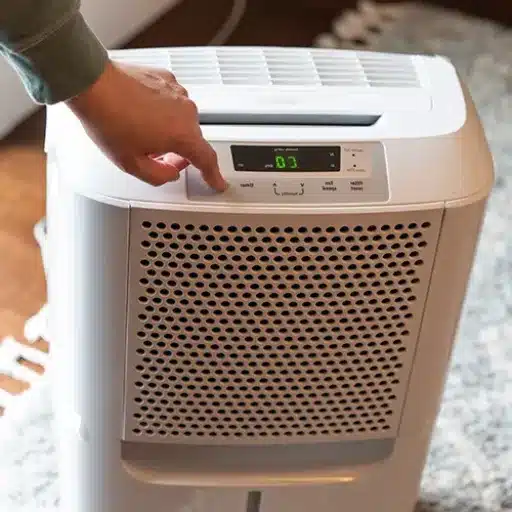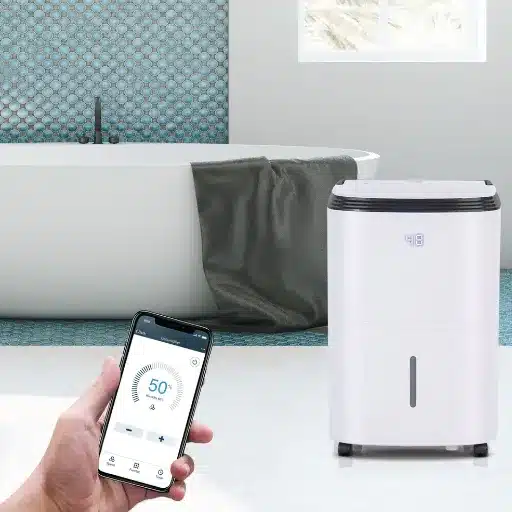Maintaining optimal air quality in smaller spaces can be a challenge, especially when excess humidity starts to take its toll on your home and health. Whether you’re looking to protect your furniture from moisture damage, reduce the risk of mold and mildew, or simply create a more comfortable living environment, a reliable dehumidifier is the ultimate solution. But with countless options on the market, finding the ideal dehumidifier for a space of 400 sq ft can feel overwhelming. That’s where we come in! This guide will walk you through everything you need to know—highlighting the best features, performance indicators, and top-rated models—so you can make an informed decision with confidence.
What is the Ideal Dehumidifier Capacity for a 400 Sq Ft Room?
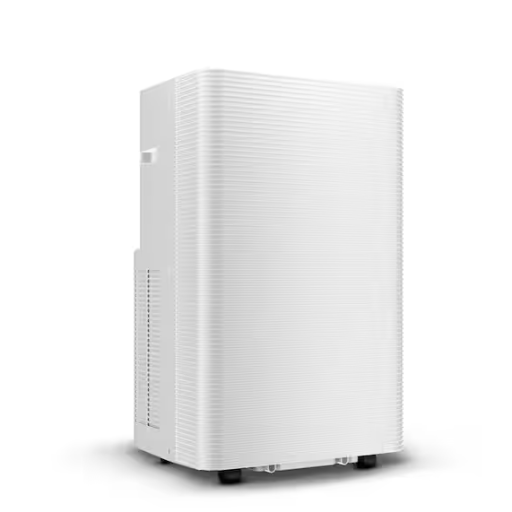
The ideal dehumidifier capacity for a 400 sq ft room typically falls within the range of 20 to 30 pints per day, depending on the humidity levels. For moderately damp spaces, a 20-pint capacity is sufficient, while more humid environments may require a 30-pint model to effectively remove excess moisture. Always consider factors like room ventilation and local climate when selecting the right capacity.
How Many Pints of Moisture Should a Dehumidifier Remove?
The number of pints of moisture a dehumidifier should remove depends on the size of the space and the severity of the humidity problem. For a moderately damp room of up to 500 sq ft, a dehumidifier that removes 20 to 30 pints of moisture per day is typically adequate. Larger rooms or spaces with high moisture levels, such as a 1,000 sq ft basement, may require models capable of removing 50 to 70 pints per day.
Humidity levels are classified into different categories, impacting the required capacity:
- Slightly Damp (50-60% Humidity): A minor amount of moisture in the air, noticeable only on very humid days. Smaller units, like those rated for 20 pints, can manage this effectively.
- Moderately Damp (60-70% Humidity): Walls may start to feel slightly damp, and the air could feel humid. A 30-pint dehumidifier is often suitable.
- Very Damp (70-80% Humidity): Humidity is apparent, and moisture might be noticeable on walls or floors. Dehumidifiers with capacities of 40-50 pints are ideal in these situations.
- Wet (Above 80% Humidity): Standing water or continuous condensation may be present, requiring at least a 50-pint dehumidifier, especially in larger spaces.
Additionally, environmental conditions such as poor ventilation, the presence of water sources, and local climate variations significantly influence the required dehumidifier capacity. Using a hygrometer to measure relative humidity can guide you in selecting the most appropriate dehumidifier for your space.
How to Calculate the Right Dehumidifier Size for 400 Sq Ft?
To calculate the correct dehumidifier size for a 400 sq ft space, you will need to consider the room’s specific conditions, including the level of humidity and the presence of moisture sources. Dehumidifier capacities are measured in pints per day (PPD), which indicate how much moisture the unit can remove within 24 hours. For a moderately damp environment, a unit with a capacity of 30–35 pints is generally sufficient for a 400 sq ft area. However, if the space is excessively damp or prone to water accumulation, such as a basement with high humidity levels, opting for a 40–50 pint dehumidifier may be necessary to achieve optimal humidity reduction.
It’s vital to assess the room’s relative humidity before making your decision. A relative humidity level above 60% typically requires immediate action to avoid issues such as mold and mildew growth. Using a hygrometer to monitor the space’s conditions is crucial and ensures accurate measurements. For better energy efficiency and performance, also consider dehumidifiers with features like auto-shutoff, continuous drain options, and adjustable humidity settings tailored to your room’s requirements.
What Humidity Level Should You Maintain?
Maintaining the right humidity level is essential for comfort, health, and preserving your home’s condition. Ideally, indoor humidity levels should range between 30% and 50%, depending on the season and climate. During the warmer months, keeping humidity closer to 50% can help alleviate the stifling effects of excessive moisture, while in colder months, a level closer to 30% can prevent condensation and mold growth on windows.
Studies indicate that keeping humidity around 45% strikes a perfect balance—it reduces the risk of respiratory issues caused by dry air and limits conditions favorable to allergens and pests like dust mites. Excessively high humidity above 60% not only creates an inviting environment for mold and bacteria but may also cause structural damage, such as wood warping or paint peeling. On the other hand, humidity levels below 20% can lead to dry skin, irritated sinuses, and even an increased risk of infections.
Deploying devices like hygrometers to measure humidity consistently and utilizing equipment such as humidifiers or dehumidifiers to regulate levels can ensure a healthier and more comfortable indoor environment year-round. Combined with good ventilation practices, maintaining ideal humidity positively impacts both your living space and overall well-being.
Should You Consider a Portable Dehumidifier for 400 Sq Ft?
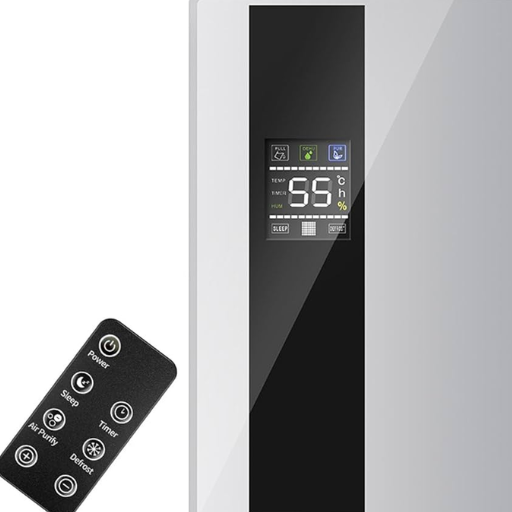
For a 400 sq ft space, a portable dehumidifier can be an excellent choice if you’re dealing with excessive moisture. It helps prevent issues like mold, mildew, and musty odors while promoting a healthier indoor environment. Look for a model suitable for small to medium spaces, with a capacity of at least 20-30 pints per day for effective results. Ensure it offers adjustable settings, a simple drainage system, and energy efficiency to maximize convenience and cost-effectiveness.
What are the Benefits of a Portable Model?
A portable dehumidifier offers unmatched convenience and flexibility in maintaining optimal humidity levels across various living spaces. Unlike fixed units, portable models can be easily moved from one room to another, allowing you to target moisture-prone areas like basements, bathrooms, or kitchens whenever needed. Many portable units are designed with lightweight frames and built-in handles or wheels, making transportation effortless.
Their compact size doesn’t compromise performance — modern portable dehumidifiers come equipped with advanced features such as adjustable humidity controls, auto-defrost functions, and even smart connectivity, enabling operation through mobile apps. For example, some models are capable of extracting up to 40-50 pints of moisture daily, ideal for rooms up to 3,000 square feet. Additionally, portable dehumidifiers often consume less energy compared to their larger, stationary counterparts, which can lead to decreased electricity bills over time. Combined with their affordability and ease of use, portable dehumidifiers prove to be a cost-effective solution for improving indoor air quality and preventing humidity-related problems.
How Does Auto Shut-Off Feature Work in Portable Units?
The auto shut-off feature in portable dehumidifiers is designed to enhance convenience, safety, and energy efficiency. This functionality operates via built-in sensors that monitor the water level in the dehumidifier’s tank. When the tank reaches its maximum capacity, the sensor triggers the unit to stop operation, preventing overflows and water spillage.
Many models incorporate float mechanisms or electronic probes to detect water levels with precision. For instance, if the water bucket can hold approximately 50 pints, the system ensures the unit halts operation exactly when nearing this limit, averting leaks. Additionally, some advanced units include visual or audible alerts to notify users that the tank needs emptying, further simplifying maintenance.
Modern portable dehumidifiers often pair the auto shut-off feature with programmable timers. This allows users to set specific operational durations, reducing unnecessary energy consumption and extending the device’s lifespan. According to current industry standards, these features contribute significantly to energy efficiency, which is a primary consideration for environmentally conscious consumers.
By combining user-centric design with advanced sensing technology, the auto shut-off feature in portable dehumidifiers ensures reliability, prevents water damage, and optimizes the overall user experience.
Can a Portable Air Conditioner Help with Humidity?
Portable air conditioners can be an effective tool for managing indoor humidity levels, as they not only cool the air but also remove excess moisture. During operation, these units draw in warm air and pass it over a cooling coil. This process cools the air and causes water vapor to condense, which is then collected in a tank or drained through a hose. As a result, humidity levels are reduced, creating a more comfortable and healthier indoor environment.
According to recent studies, the average portable air conditioner can remove between 20 to 70 pints of water per day, depending on the size and model of the unit. This feature is particularly beneficial in regions prone to high humidity, where damp air can lead to issues such as mold growth, musty odors, and potential health risks like respiratory problems.
Some advanced portable air conditioners are equipped with dual functionalities, acting as both a cooler and a dehumidifier. These models can operate in dehumidification mode when cooling isn’t required, offering greater flexibility for year-round use. It’s important to note that for optimal performance, regular maintenance of your unit—such as emptying the water tank and cleaning the filters—is essential to ensure efficient humidity control.
By incorporating a portable air conditioner into your home or workspace, you can maintain a balanced indoor climate that promotes comfort and well-being, even in the most humid weather conditions.
How to Maintain Your 400 Sq Ft Dehumidifier?

Maintaining your 400 sq ft dehumidifier is straightforward and helps ensure its efficiency:
- Clean the Filters Regularly
Remove and clean the air filters every two weeks or as recommended by the manufacturer. Use warm water and mild soap to wash the filter, then allow it to air dry completely before reinstalling.
- Empty and Clean the Water Tank
Empty the water tank daily to prevent mold or bacteria buildup. Rinse it with warm water and a mild detergent once a week, ensuring it is thoroughly dried before use.
- Check for Dust and Debris
Inspect the vents and exterior of the unit for dust or debris periodically. Wipe these areas with a soft cloth to maintain airflow.
- Monitor the Humidity Sensor
Ensure the humidity sensor is functioning correctly by verifying it provides accurate readings. Consult the manual if recalibration is necessary.
- Store Properly When Not in Use
If you’re not using the dehumidifier for an extended period, clean the unit thoroughly and store it in a cool, dry place to avoid damage.
How Often Should You Empty the Water Tank?
The frequency with which you should empty the water tank of a dehumidifier largely depends on factors such as the unit’s size, the tank’s capacity, and the level of humidity in the area. On average, most residential dehumidifiers need their tanks emptied every 1-2 days under moderate humidity conditions. For smaller units or areas with high humidity, you might need to empty the tank more frequently—sometimes even multiple times a day.
To put this into perspective, a standard dehumidifier designed for a medium-sized room typically extracts around 20-30 pints of moisture per day. If your model has a 1-gallon (approximately 8-pint) tank, this means you’ll likely need to empty it twice daily under these conditions. High-efficiency models or those with larger tanks might require less frequent attention.
For added convenience, many modern dehumidifiers offer continuous drainage options, allowing you to connect a hose to bypass manual emptying altogether. Monitoring the indicator light or humidity levels in your space will help you determine the right schedule for your specific needs.
What is the Best Way to Clean the Drain Hose?
To drain the hose properly, begin by removing it from the hvac equipment and checking for any visible obstructions like mold, debris, or mineral build-up. A blocked drain hose can circumvent effective drainage and cause flooding. Using a small scrub brush with a long handle built for tubes or thin pipes, scrub the inside of the tube with gentle pressure. If it is stubborn, let it sit in a mixture of warm water and white vinegar or mild detergent for half an hour to disinfect and so bacteria or mold covered biofilm.
Once immersed, thoroughly rinse the tube with fresh clean water. For tubes used in hard water areas, consider rinsing with a diluted vinegar and water solution or a softening agent to avoid hard water deposits from building up with time. Do not reattach the hose until it is fully dry to avoid moisture that can lead to microbial growth. This maintenance should be performed at least every 3 months in any environment, humid or not, to ensure the smooth and sanitary operation of the dehumidifier.
How to Ensure Proper Drainage?
Proper drainage is essential for maintaining the efficiency of your dehumidifier and preventing water damage to your space. To achieve optimal drainage, start by ensuring the dehumidifier is positioned on a flat, stable surface. An uneven placement can cause water to pool or spill, disrupting the flow.
Next, check if your dehumidifier is equipped with a built-in pump or gravity drainage system. Models with pumps can push water upward and out through a drainage hose, offering flexibility in setup. On the other hand, gravity drainage relies on a downward water flow and requires placement near a floor drain for effective operation.
When connecting the drainage hose, ensure it is securely attached and free of kinks or bends that can obstruct water flow. Studies show that even a minor obstruction can significantly reduce drainage efficiency, potentially causing backups and overflows. Use a hose clamp if necessary to maintain a tight seal.
For long-term functionality, routinely inspect the drainage hose and outlet for clogs caused by dirt, mold, or mineral buildup. Flushing with a mix of warm water and vinegar can help remove blockages and sanitize the system. Research highlights that regular maintenance can extend the lifespan of drainage components by up to 20%.
Lastly, keep the surrounding area clean and dry to prevent slipping hazards or the accumulation of excess moisture. Ensuring proper drainage not only supports the smooth operation of your dehumidifier but also contributes to a healthier, more comfortable indoor environment.
Is a Dehumidifier for Basement Suitable for 400 Sq Ft Bedrooms?
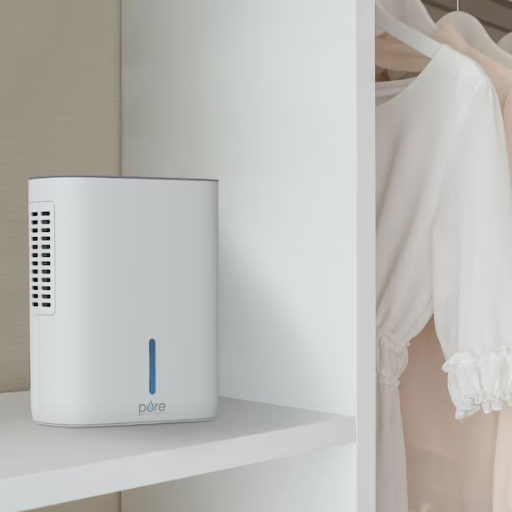
Yes, a dehumidifier designed for basements can be suitable for a 400 sq ft bedroom, but it depends on its capacity and features. Look for a unit designed to handle the specific square footage of the room and ensure it has adjustable settings to prevent over-drying the air. Additionally, quieter models are more appropriate for bedrooms to avoid disturbances during sleep. Always check the manufacturer’s recommendations to confirm suitability for bedroom use.
What are the Differences Between Basement and Bedroom Units?
Basement units differ from bedroom units in location, natural light, ventilation, privacy, and legal requirements.
|
Key Point |
Basement Unit |
Bedroom Unit |
|---|---|---|
|
Location |
Below ground |
Above ground |
|
Light |
Limited |
Ample |
|
Ventilation |
Restricted |
Better |
|
Privacy |
Higher |
Standard |
|
Legal Needs |
Specific |
General |
|
Moisture |
Prone |
Minimal |
|
Pests |
Likely |
Rare |
|
Noise |
High |
Lower |
|
Heating |
Costly |
Moderate |
|
Cooling |
Cheaper |
Standard |
How Effective is Moisture Removal in Basement Units?
When it comes to moisture removal in basement units, I’ve found them to be highly effective, mainly due to their robust design and capacity to handle larger spaces with higher humidity levels. These units are typically equipped with powerful compressors and larger water reservoirs, enabling them to extract significant amounts of moisture efficiently. However, their performance can vary depending on factors like the unit’s size, the layout of the basement, and the prevailing humidity levels.
What are the Key Features to Look for in the Best Dehumidifier?
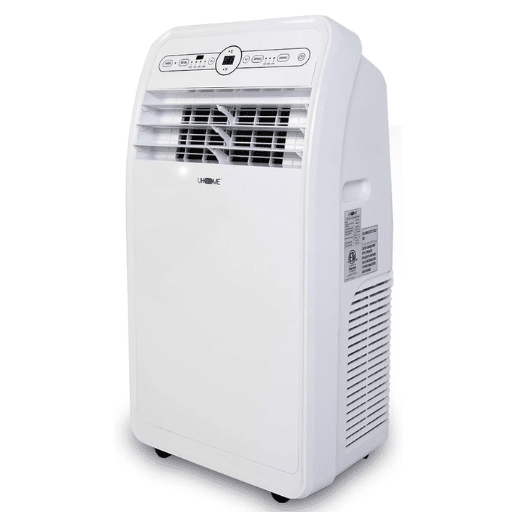
- Capacity – Choose a dehumidifier with the right capacity to match your space. Look for models rated to handle the size and humidity level of the area.
- Energy Efficiency – Opt for units with an Energy Star certification to save on electricity costs while maintaining performance.
- Water Tank Size and Drainage Options – A larger water tank reduces the frequency of emptying, while continuous drainage options provide added convenience.
- Humidity Control – Adjustable settings and built-in humidistats allow for precise humidity management.
- Noise Level – Consider quieter models for living spaces or areas where noise could be disruptive.
- Portability – Look for features like wheels and handles for easy movement between rooms if needed.
- Additional Features – Extras such as timers, air filters, or auto-defrost can enhance usability and improve air quality.
Why is Humidity Control Important?
Maintaining proper humidity levels is essential for both health and comfort, as well as the protection of your home and belongings. High humidity can foster the growth of mold, mildew, and dust mites, which are known to trigger allergies and respiratory issues. According to studies, indoor relative humidity levels between 30% and 50% are ideal for reducing these risks. Excess moisture can also damage walls, flooring, and furniture over time, leading to costly repairs.
Conversely, extremely low humidity can cause dry skin, irritated respiratory passages, and increased static electricity. It can even affect wooden furniture and flooring, causing them to crack or warp. Research highlights that maintaining balanced humidity not only protects your home but also helps energy efficiency—proper levels reduce strain on heating and cooling systems. By investing in effective humidity control, you create a healthier, more comfortable environment while preserving the structural integrity of your living space.
How Does Energy Star Rating Affect Efficiency?
The Energy Star rating plays a critical role in improving efficiency by providing a reliable benchmark for energy performance. Products with this certification are independently tested and verified to meet stringent energy efficiency guidelines established by the Environmental Protection Agency (EPA) or the Department of Energy (DOE). For instance, Energy Star appliances like refrigerators, washers, and HVAC systems are typically 10-50% more energy-efficient compared to non-certified models, translating into substantial energy savings for consumers over time.
According to recent data, an Energy Star-certified dishwasher uses approximately 12% less energy and 30% less water than non-certified alternatives, while certified LED bulbs use at least 75% less energy and last up to 25 times longer than traditional incandescent lighting. Additionally, Energy Star certified heating and cooling systems can save homeowners up to $130 annually on utility bills, depending on usage and local energy rates. This not only reduces household utility costs but also contributes to environmental conservation by lowering greenhouse gas emissions.
Employing Energy Star rated products is an impactful way to enhance energy efficiency. Whether you’re building a new home or upgrading appliances, choosing certified options ensures optimal performance with less environmental impact. These products strike a balance between upfront investment and long-term benefits, making them a smart choice for sustainability-conscious consumers.
What is the Importance of a Warranty?
A warranty is a critical factor when purchasing products, especially appliances, electronics, and other high-value items, as it provides both financial security and peace of mind. It serves as a pledge from the manufacturer or seller, guaranteeing that the product will perform as advertised for a specific period. If the product malfunctions or breaks down within the warranty period due to manufacturing defects, the consumer is entitled to repairs, replacements, or even refunds at no additional cost.
Recent industry data highlights that over 75% of consumers prefer products that include a warranty, emphasizing its role in fostering trust between brands and buyers. Warranties often cover key components and labor costs, potentially saving consumers hundreds or even thousands of dollars. For instance, an extended warranty for a major household appliance, such as a refrigerator, can prevent repair costs of up to $500 or more.
Additionally, warranties encourage manufacturers to maintain high-quality standards, as they are financially accountable for defects or issues. Beyond protection, extended warranties and service contracts are becoming increasingly popular, offering customization options that cater to individual consumer needs for long-term assurance. Understanding the terms and coverage of a warranty can empower consumers to make better purchasing decisions while safeguarding their investment.
Reference Sources
-
Improving the energy efficiency of dehumidification technology at a large facility in Florida – Discusses mechanical and desiccant dehumidification.
-
Further Investigation Of Energy And Performance Impacts Of Whole-House Dehumidifier Duct Configurations – Explores the performance impacts of dehumidifier duct configurations.
-
The Energy Efficiency of Dehumidified Two-Stage Air Compression – Examines thermodynamic aspects of air compression and dehumidification systems.
-
Investigation of a water desalination method via a humidification-dehumidification process using HVAC technology – Focuses on humidification-dehumidification processes in HVAC systems.
-
Evaluation of the Performance of Houses with and without Supplemental Dehumidification in a Hot-Humid Climate – Evaluates residential dehumidification in hot-humid climates.
Frequently Asked Questions (FAQs)
Q: What is the best home dehumidifier for a 400 sq ft space?
A: The best home dehumidifier for a 400 sq ft space should have a removal capacity of around 20-30 pints of moisture per day, ensuring efficient moisture removal from the air. Models with quiet operation and features like a 24-hour timer or wi-fi connectivity are also recommended.
Q: Does Home Depot offer dehumidifiers suitable for small spaces?
A: Yes, Home Depot offers a variety of dehumidifiers suitable for small spaces, including options with free shipping. These models are designed to efficiently remove moisture from the air in areas like bathrooms or laundry rooms.
Q: How do I choose a dehumidifier for home use?
A: When choosing a dehumidifier for home use, consider the size of the space, the removal capacity (pints of moisture per day), and features like fan speed and quiet operation. For a 400 sq ft area, a model with a capacity of 20-30 pints per day is ideal.
Q: Can a dehumidifier help prevent mildew in my bathroom?
A: Yes, using a dehumidifier in your bathroom can help prevent mildew by removing excess moisture from the air. This helps maintain a target humidity level and reduces dampness, which is conducive to mildew growth.
Q: What is the significance of ‘pints per day’ in a dehumidifier’s specifications?
A: ‘Pints per day’ indicates the amount of moisture a dehumidifier can remove from the air within 24 hours. For a 400 sq ft space, a dehumidifier with a capacity of 20-30 pints per day is typically sufficient.
Q: Are there dehumidifiers with smart home features?
A: Yes, some dehumidifiers come with smart home features such as wi-fi connectivity, allowing you to control and monitor the unit remotely. This can enhance convenience and ensure optimal moisture removal in your living space.
Q: How do dehumidifiers work to remove moisture from the air?
A: Dehumidifiers work by drawing in moist air through an air inlet, cooling it to condense the water vapor, and then passing the drier air back into the room. This process efficiently removes water from the air, reducing humidity levels.
Q: What features should I look for in a dehumidifier for a laundry room?
A: For a laundry room, look for a dehumidifier with a high removal capacity to handle the extra moisture. Features like a 24-hour timer, adjustable fan speed, and quiet operation are also beneficial in such environments.
Q: Is a dehumidifier effective in crawl spaces?
A: Yes, a dehumidifier can be effective in crawl spaces by reducing dampness and preventing issues like mold. Ensure the model you choose is suitable for the specific size and conditions of your crawl space.


